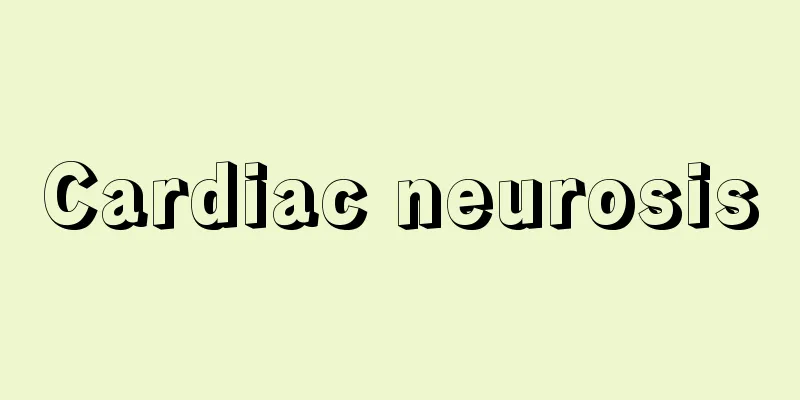Cardiac neurosis

|
Cardiac neurosis is a relatively common disease, which is also called functional heart disease. It can cause a variety of symptoms. Patients will experience palpitations, chest tightness, difficulty breathing and other symptoms. This disease mostly occurs in middle-aged and young people. Generally speaking, as long as good treatment is carried out and good conditioning is strengthened in daily life, its prognosis is very good. Let's take a look at this aspect. Cardiac neurosis Cardiac neurosis is also known as functional heart discomfort, neurocirculatory asthenia or effort syndrome, cardiovascular neurosis, and is called neurocirculatory dysfunction or neurocirculatory asthenia or hypersensitivity in foreign countries. It is a special type of neurosis and also a very common cardiovascular disease. The main manifestation is cardiovascular dysfunction, which may be accompanied by other manifestations of neurosis. The symptoms are varied, the most common of which include palpitations, precordial pain, chest tightness, shortness of breath, dyspnea, dizziness, insomnia, and nightmares. It mostly occurs in young and middle-aged people, with the highest incidence among those aged 20 to 40. It can also be seen in middle and senior white-collar workers, middle-aged and elderly people with empty-nest diseases, patients after myocardial infarction or stroke, and even some teenagers. It is more common in women, especially menopausal women. There are no obvious organic lesions in the physical examination of this disease. Although the symptoms are very severe, the prognosis is good. Causes Due to the influence of factors such as anxiety, tension, emotional excitement, and mental trauma, the excitation and inhibition processes of the central nervous system are disturbed, and the cardiovascular system regulated by the autonomic nervous system also becomes disordered, causing a series of symptoms of excessive sympathetic nerve tension. In addition, excessive fatigue, too little physical activity, and lack of proper exercise of the circulatory system result in the inability to adapt to the slightest activity or fatigue, thus producing excessive cardiovascular response and causing this disease. Clinical manifestations It is more common in young and middle-aged women, with a variety of cardiovascular symptoms, which may be mild or severe but are usually not serious. There is usually no evidence of organic heart disease, but it may exist at the same time as organic heart disease or occur on the basis of the latter. Common symptoms are palpitations, chest pain, chest tightness, chest congestion, shortness of breath, accompanied by insomnia, irritability, tension, anxiety, depression, etc. |
<<: Onychomycosis softens and falls off
>>: How to check neurological problems
Recommend
What causes neck pain?
Many people have experienced neck muscle pain. Th...
Is breast pain caused by breast cancer? Six common symptoms of breast cancer
Breast cancer can cause serious harm after it occ...
What are the nursing measures for colorectal cancer
What are the maintenance methods for colorectal c...
Does tooth decay mean the presence of worms?
Tooth decay is actually what we call tooth decay,...
Do e-books hurt your eyes?
Nowadays, people are not used to reading books, b...
What are the benefits of taking vitamin B2 for women
Vitamins are indispensable nutrients in the human...
Medication for the recovery period of cerebral infarction_Medication for the recovery period of cerebral infarction
Cerebral infarction is a serious illness. After a...
What is the difference between Yin Yoga and Flow Yoga?
In real life, yoga is very familiar to many peopl...
Early symptoms of uterine cancer Uterine cancer
Early symptoms of uterine cancer usually include ...
Understanding what hamartoma is
Hamartoma is a serious threat to our health. It i...
What is red blood cell suspension?
Red blood cell suspension is clinically referred ...
What should I do if my arms ache after getting drunk?
The symptoms of arm pain after getting drunk may ...
Can athlete's foot be transmitted to babies?
As we all know, athlete's foot is contagious....
Tips for getting rid of acne
Acne removal has become one of the most annoying ...
Is it okay for men not to wear underwear?
Underwear is a protective film between the privat...









